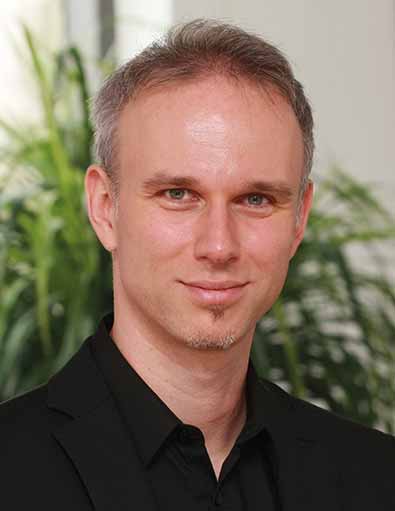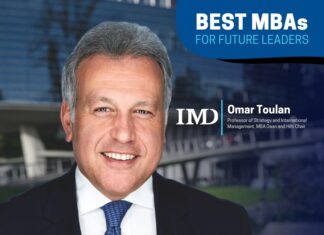By David De Cremer and Tian Tao
The CEO of an organisation is where the buck stops, and to whom all credit is due for success. But is this idea of the CEO as a “heroic leader” out-dated? Organisations need to implement leadership innovation to secure a successful and profitable future, as Ren Zhengfei has done with his multinational company Huawei.
CEO’s are the driving force behind any for-profit organisation. They are often represented as heroic leaders analysing how the company should respond to changes and opportunities represented by society, economy, markets and finally customers. Or, at least, that is what popular beliefs about the role of a CEO want you to believe. We all know that when companies are scrutinised, the CEO is held accountable. Also, when a company is invited to hearings the one who is in charge will usually be summited, which in reality is the CEO. All of these practices have led to the idea that a CEO is the embodiment of the company responsible for any decision made or any result achieved by that company. Particularly when it comes down to a company’s financial performance, the CEO is often regarded as the individual promoting sales, profit and creating shareholder value in general. For example, Fortune magazine wrote in 1997 in their April issue that the then-CEO Louis Gerstner added more than $40 billion to IBM’s market value, making it sound as if he was solely responsible for this amazing achievement.
But, is this idea of the CEO acting as heroic leader in an increasingly more competitive and dynamic global market truly a valid one? This question is not a new one and the idea of the CEO as the leader responsible for everything good and bad has been challenged theoretically. However, so far, no company has undertaken any actions to challenge this idea in real life. In other words, to date, no true innovation management ideas have been implemented yet to challenge this notion of the CEO as a heroic leader. In this article, we wish to discuss a multinational company that has introduced an innovative leadership model when it comes down to the role of the CEO. This company is the Chinese telecom giant Huawei, which was established as a private company by its founder Ren Zhengfei in 1987 in the economic testing zone of Shenzhen.
What do we know about this company? In 2012, Huawei became the world leader in the telecommunication industry when it surpassed Ericsson in terms of sales revenue and net profit. In 2014, Huawei reached an all-time high sales revenue of CNY288.197 billion (US$46.515 billion) and CNY27.866 billion (US$4.49 billion) in net profit. At this moment Huawei employs about 170,000 staff, including more than 40,000 non-Chinese (75% of employees outside China are local hires), and serves more than 3 billion customers worldwide. It is ranked number 285 on the Fortune Global 500 and the only Chinese company that receives more sales revenue from markets outside (67%) than from inside China.
 The overwhelming success of the company has been attributed much to the thinking and vision of its founder Ren Zhengfei. He is known as a leader who inspires and motivates people to pursue innovation at all levels and at the same time adopts a reflective and self-criticising attitude, especially in times of success. In fact, in Huawei a strong belief exists in the power of thinking. Indeed, Zhengfei is not afraid of challenging his own leadership by using insights taken from both history and scholarly writings. For that reason it is maybe no surprise that the true management innovation in this company takes place at the leadership level where Huawei has challenged the notion of having one all-mighty CEO in place. Indeed, Huawei has replaced the practice of having one CEO by implementing a rotating CEO system. In this system three deputy chairmen act as the rotating and acting CEO for a tenure of six months and form a board of seven together with four standing committee members. In a symbolic way, the four standing committee members are present to provide a stable pillar to the three rotating CEO’s. The person who holds the CEO position is at that time the highest ranking officer in the company; whereas Zhengfei maintains his CEO role at all times to act as a mentor and coach for the rotating CEO.
The overwhelming success of the company has been attributed much to the thinking and vision of its founder Ren Zhengfei. He is known as a leader who inspires and motivates people to pursue innovation at all levels and at the same time adopts a reflective and self-criticising attitude, especially in times of success. In fact, in Huawei a strong belief exists in the power of thinking. Indeed, Zhengfei is not afraid of challenging his own leadership by using insights taken from both history and scholarly writings. For that reason it is maybe no surprise that the true management innovation in this company takes place at the leadership level where Huawei has challenged the notion of having one all-mighty CEO in place. Indeed, Huawei has replaced the practice of having one CEO by implementing a rotating CEO system. In this system three deputy chairmen act as the rotating and acting CEO for a tenure of six months and form a board of seven together with four standing committee members. In a symbolic way, the four standing committee members are present to provide a stable pillar to the three rotating CEO’s. The person who holds the CEO position is at that time the highest ranking officer in the company; whereas Zhengfei maintains his CEO role at all times to act as a mentor and coach for the rotating CEO.
To elect the seven board members, Huawei uses a democratic voting system. To understand this system it is necessary to be aware of the fact that Huawei is an employee-owned company where Zhengfei only owns 1.4% of the company shares, whereas 82,471 employees hold the rest of the shares (stated in Huawei’s 2014 Annual report, as of December 31, 2014). These 82,471 employees first select 51 shareholder representatives and 9 alternate representatives. These 60 representatives then select candidates for the standing committee. The selected candidates must then deliver a speech to the 60 shareholder representatives, who will then vote.
Where does the idea of a rotating CEO system come from?
Within Huawei the belief exists that we need to respect and learn from nature itself. Such insights can teach us much about how companies should function. In case of the rotating CEO system, two stories from the animal kingdom are important. The first story relates to how herds of buffalos live and function together and is inspired by a book on new leadership called Flight of the Buffalo by James Belasco and Ralph Stayer. In this book it is explained that herds of buffalos follow their chief buffalo and if this chief is killed the herd will end up in chaos and die as well. According to Belasco and Stayer, this story represents the traditional leadership style where one leader gives direction and therefore becomes indispensable, creating a situation where followers will not know what to do if the leader is no longer present. In a similar vein, Ren Zhengfei does not want Huawei to be clueless about its own business direction if he – as the only CEO – should pass away. To avoid this situation, a second animal kingdom story is relevant. This story is about how ducks fly when travelling in groups. Ducks tend to fly in a “V” formation and what is specific to their behaviour is that the leader of the group changes regularly, allowing others to rest. In line with the duck’s flying behaviour, Huawei has decided to counteract the possible negative consequences of having only one leader (CEO) by introducing a system where the enacting CEO changes regularly as well. Finally, the idea of having a fixed-time period to rotate CEO leadership is inspired by the rotating four-year system that is used for the presidential elections in the US.
How was the rotating CEO system implemented?
Huawei did not implement this rotating system immediately. The first move in this direction happened by installing a system of rotating COO’s. Eight executives rotated on a regularly basis in the role of COO, which helped Ren Zhengfei to move his focus from the more operational tasks to developing the strategy and culture of the company. Interestingly, this decision to spread the function and tasks of the COO over a number of executives aligns well with the recent popular trend within the corporate world to eliminate the COO function and allocate the operational tasks across executives at C-suite level. Indeed, a survey by the senior executive search firm Crist Kolder Associates, revealed that the function of COO is gradually disappearing from the business world (i.e. the percentage of Fortune 500 and S&P 500 companies with a COO has declined steadily from 48 percent in 2000 to 36 percent in 2014).
Important for the development of the C-suite at Huawei is that the rotating COO system helped Zhengfei to turn more into the thought leader – rather than only being the energetic and directive leader he always was – that people know today. In 2012, the rotating CEO platform came to life and was at that time considered a form of disruptive innovation in corporate leadership. Due to the implementation of this platform, Zhengfei was able to create even more latitude to grow in his role of thought leader. Having said this, it is important to note that despite his leadership role change he nevertheless keeps a significant amount of influence in the decisions taken within the company. Indeed, the standing committee makes the decisions, but every decision also requires a signature by Zhengfei. Specifically, due to this influence, he has kept two types of power: the power to impeach the acting CEO and veto power (which he rarely uses).
What will the future bring?
Many observers have noted that the ultimate goal of the rotating CEO system is to identify the predecessor of Ren Zhengfei. The business model of Huawei is based on values that Zhengfei has made important since the inception of the company – serving the needs of customers by being sincere, persistent and innovative in making the dreams of customers come true. A potential worry towards the future, however, is whether they will be able to remain such a strong value-driven organisation without Zhengfei being a part of Huawei anymore. For that reason, the Western media especially has suggested that this CEO rotating system is used as a kind of entrance exam to determine who will become the next leader of Huawei and thus succeed Zhengfei. Talking to several executives within Huawei, however, the idea exists that the company is not looking for a replacement of Ren Zhengfei at all. In fact, it is their belief that Huawei in the future will make use of a shared leadership idea where all participating executives will safeguard and develop further the company’s values.
This idea of shared leadership is clearly reflected in the features that make up for the rotating CEO platform:
By not allowing one person to be the leader of the company all the time, the company will make use of the collective wisdom of the standing committee rather than the wisdom of one single individual.
By rotating the CEO every six months, the company will be led by different personalities, which will create a much more diverse work place where different perspectives will be communicated and tested. To avoid potential conflicts, due to the fact that the standing committee members have different personalities, all members have to agree with any public communication beforehand.
Due to the shared decision making process and the fact that Huawei is a private and not public company, the long-term and sustainable interest of Huawei will be best served.
 These characteristics of the rotating CEO platform ensures that Huawei’s values will not fade soon as they are collectively endorsed and the decision-making process towards the future will also be a collective one. In addition, two more practices within Huawei exist with a focus on ensuring that the company’s values are spread and communicated. The first practice includes the existence of the Huawei University where training sessions are given on how to conduct Huawei business and provide solutions with a focus on serving the needs of their customers. The second practice is the use of a value training camp for new employees where they are introduced to the values that form the backbone of the growth and success of Huawei so far. The aim of the camp is repetition of the core values and to communicate that both individual and collective growth is possible by serving the needs of the customers.
These characteristics of the rotating CEO platform ensures that Huawei’s values will not fade soon as they are collectively endorsed and the decision-making process towards the future will also be a collective one. In addition, two more practices within Huawei exist with a focus on ensuring that the company’s values are spread and communicated. The first practice includes the existence of the Huawei University where training sessions are given on how to conduct Huawei business and provide solutions with a focus on serving the needs of their customers. The second practice is the use of a value training camp for new employees where they are introduced to the values that form the backbone of the growth and success of Huawei so far. The aim of the camp is repetition of the core values and to communicate that both individual and collective growth is possible by serving the needs of the customers.
In conclusion, all of the above and the literature on the recent trend in approach to leadership as a shared social phenomenon, it is clear that the CEO position represented by a unique individual problem-solver is not the future for value-driven organisations. The innovative approach of Huawei to leadership represents an interesting and insightful approach to how leadership at the highest company level may look like in the future. Indeed, the rotating CEO system of Huawei has delivered a decision-making system where both the ideas of democracy and centralisation are balanced. This system means that a company can prevent itself from collapsing due to a single leader, and at the same time benefit from the shared wisdom present to raise efficiency.
About the Authors
 David De Cremer is the KPMG Professor of Management Studies at the Judge Business School, University of Cambridge, UK, and a fellow of the Ruihua Innovative Management Research Institute at Zehjiang University, China. Before moving to the UK he was a Professor of Management at China Europe International Business School in Shanghai. He is the author of the book Pro-active Leadership: How to overcome procrastination and be a bold decision-maker.
David De Cremer is the KPMG Professor of Management Studies at the Judge Business School, University of Cambridge, UK, and a fellow of the Ruihua Innovative Management Research Institute at Zehjiang University, China. Before moving to the UK he was a Professor of Management at China Europe International Business School in Shanghai. He is the author of the book Pro-active Leadership: How to overcome procrastination and be a bold decision-maker.
 Tian Tao is Co-director of the Ruihua Innovative Management Research Institute at Zehjiang University, China. He is the author of the book The Huawei Story and Founder and Editor-in-Chief of Top Capital Magazine.
Tian Tao is Co-director of the Ruihua Innovative Management Research Institute at Zehjiang University, China. He is the author of the book The Huawei Story and Founder and Editor-in-Chief of Top Capital Magazine.

























![“Does Everyone Hear Me OK?”: How to Lead Virtual Teams Effectively iStock-1438575049 (1) [Converted]](https://www.europeanbusinessreview.com/wp-content/uploads/2024/11/iStock-1438575049-1-Converted-100x70.jpg)





